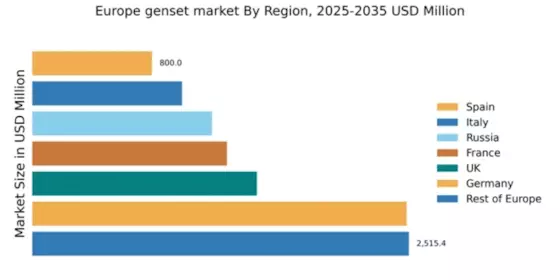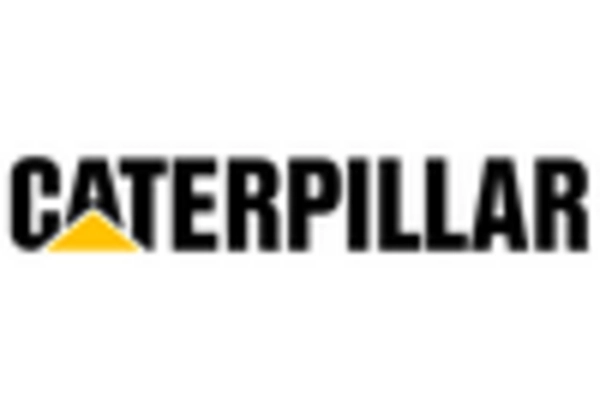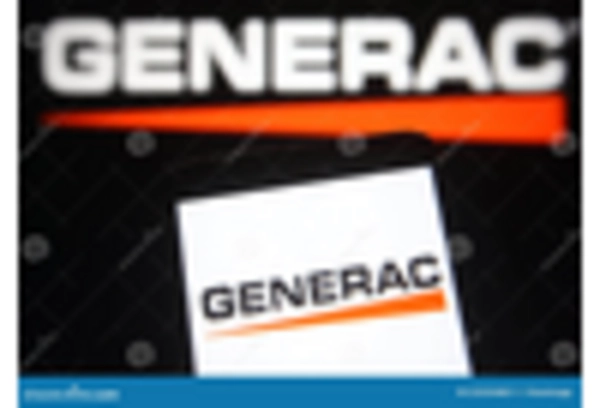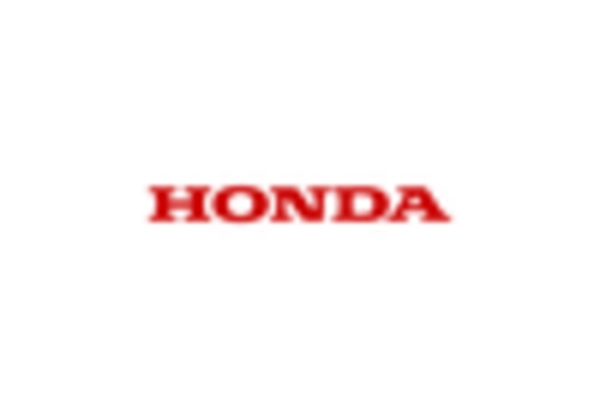Rising Energy Costs
The escalating costs of energy in Europe are driving the genset market. As consumers and businesses face higher electricity bills, the demand for backup power solutions is likely to increase. This trend is particularly evident in regions where energy prices have surged by over 20% in recent years. Consequently, many organizations are investing in gensets to mitigate the impact of fluctuating energy costs. The genset market is expected to benefit from this shift, as more entities seek reliable and cost-effective power alternatives. Furthermore, the increasing reliance on renewable energy sources, which can be intermittent, further emphasizes the need for backup generators. As energy prices continue to rise, the genset market may see a significant uptick in demand for both portable and stationary generators.
Increased Frequency of Power Outages
The frequency of power outages in Europe has been on the rise, which is significantly impacting the genset market. Factors such as aging infrastructure, extreme weather events, and increased energy demand contribute to this trend. Reports indicate that certain regions have experienced a 15% increase in outage incidents over the past few years. As a result, both residential and commercial consumers are increasingly seeking reliable backup power solutions to mitigate the risks associated with outages. This growing concern for power reliability is likely to propel the genset market forward, as more individuals and businesses invest in generators to ensure continuous operations. The demand for both portable and stationary gensets is expected to grow as consumers prioritize energy security.
Regulatory Support for Energy Resilience
European governments are increasingly implementing regulations that promote energy resilience, which is positively influencing the genset market. Policies aimed at enhancing energy security and reducing reliance on grid power are becoming more prevalent. For instance, several countries have introduced incentives for businesses to invest in backup power systems, including tax breaks and grants. This regulatory support is likely to encourage more organizations to adopt gensets as a means of ensuring uninterrupted power supply. The genset market could see a substantial increase in sales as compliance with these regulations becomes essential for operational continuity. Additionally, the focus on energy resilience aligns with broader sustainability goals, further driving the adoption of gensets across various sectors.
Growing Industrialization and Urbanization
The ongoing industrialization and urbanization in Europe are contributing to the expansion of the genset market. As cities grow and industries expand, the demand for reliable power sources becomes more pronounced. Urban areas, in particular, are experiencing increased energy consumption, which can strain existing power grids. This situation creates a favorable environment for gensets, as businesses and municipalities seek alternative power solutions to ensure operational continuity. The genset market is likely to benefit from this trend, as more entities invest in backup generators to support their energy needs. Additionally, the rise of new construction projects in urban areas may further stimulate demand for gensets, as developers look to incorporate reliable power solutions into their plans.
Technological Innovations in Genset Efficiency
Technological advancements in generator efficiency are playing a crucial role in shaping the genset market. Innovations such as improved fuel efficiency, reduced emissions, and enhanced control systems are making modern gensets more appealing to consumers. The introduction of smart technology, which allows for remote monitoring and management, is also gaining traction. These advancements not only enhance the performance of gensets but also align with the increasing regulatory focus on environmental sustainability. As a result, the genset market is likely to witness a shift towards more efficient and eco-friendly generator options. The potential for reduced operational costs and compliance with stringent environmental regulations may further drive the adoption of these advanced gensets across various sectors.


















Leave a Comment